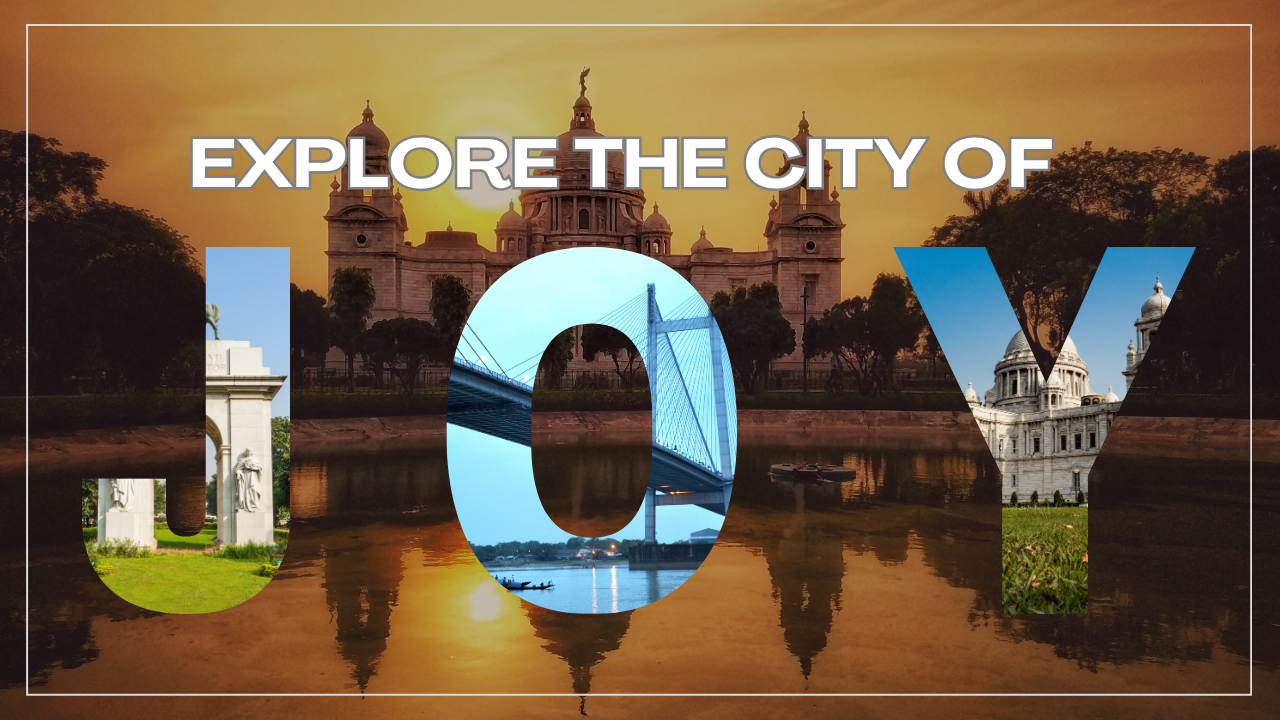Currently Empty: ₹0.00

Kolkata: The City of Joy
Introduction
The capital of the Indian state of West Bengal, Kolkata is renowned as the “City of Joy.” Located on the banks of the Hooghly River, this bustling metropolis is a cultural centre that exemplifies the spirit of happiness via its illustrious past, enduring intellectual legacy, thriving artistic endeavours, and delectable culinary offerings.
History of Kolkata
The East India Company took over the trade and gave Calcutta its name in the 17th century. It was a large colonial city and the capital of the British Indian Empire until 1911. The capital was later moved to Delhi due to growing demographic nationalism. It was also the busiest and largest trading port in the British Empire. Western education and influence first came to India in Calcutta, where the fusion of European sciences and literature with Indian art and traditions made it a global city. It was the center of independence movements and revolutionary ideas.
Architecture
- North Kolkata: This is the area that was mostly inhabited by the British and the 19th-century Victorian architecture is proof of that. It is full of crowded apartments and busy bazaars. Popular centers are Shyambazar, Chitpur, Shobhabazar, Dum-Dum, Maniktala.
- Central Kolkata: It is a major business center for public and private institutions such as the RBI and the High Court. The Maidan is often called the “Lungs of Calcutta” as it is located in the heart of the city. Victoria Memorial and Kolkata Racecourse are close to the hotel. Central Park and Millennium Park are also popular areas.
- East Kolkata: It is relatively new, recently designed, and developed. Salt Lake City or Bidannagar, Rajarhat (new city), and Beliagata are the centers of the IT and telecommunication industry.
- South Kolkata: This is an elegant and advanced area. Lansdowne, Santoshpur, Golf Green, Ballygunge, and Alipore are the main attractions. The Eastern Command of the Indian Army is headquartered at Fort William.
Culture
The culture, media, and sports in this city are a vibrant kaleidoscope of the creative and contemporary minds of Kolkata. People here love to eat: the heart of the city’s culture is the countless sweets, fish, and savory snacks available in every home and corner of the city.
Sondesh, a sweet made from milk extract or Chena, and Rasgulla, a syrupy white milk ball, are perennial favorites. Among the main dishes, various gourmet fish curries and recipes are something that Kolkata and Bengalis, in general, are proud of.
Kolkata’s street food game is also top-notch. The European palette-inspired Kathi Roll or noodles served in an egg white wrapper are unanimously voted the number one snack by college and office visitors. It is the dreamland of food lovers. Even in fashion and media, I take inspiration from the public.
It is often said that the best-talented singers and artists of India live in Kolkata. A number of internationally renowned artists, writers, singers, dancers, sculptors, engineers, and scientists proudly call Kolkata home.
People
About three-quarters of the population are Hindus. Muslims are the largest minority group and there are Christians, Sikhs, Jains, and Buddhists. The dominant language is Bengali, but Urdu, Odia, Tamil, Punjabi, and other languages are also spoken.
Population density is extremely high and overcrowding has reached almost unbearable levels in many parts of the city.
The Character of the City
Modeled after the great European capital of the British colony, but now located in one of the poorest and most overcrowded regions of India, Kolkata has become a city of stark contrasts and contradictions.
This large and bustling Indian city thrives amid seemingly insurmountable economic, social and political challenges. Its inhabitants demonstrate a great zest for life, manifested in a passion for art and culture, as well as a high level of intellectual vitality and political awareness.
Refuge for Readers
Kolkata has always been regarded as a refuge for writers. Many famous writers, poets, and Nobel Prize winners were raised there, including Rabindranath Tagore. College Street is a literary mecca because of all the bookstores and publishing businesses that line it. Kolkata is home to many literary festivals where prominent thinkers and writers gather to discuss and debate important topics. India’s literary scene is in large part, a product of the city’s rich intellectual history.
Creativity and the Arts
The many museums, theatres, and other cultural institutions in Kolkata attest to the city’s strong artistic community. The Indian Museum is the country’s oldest museum and is home to numerous priceless works of art and artefacts from India’s rich history. Exhibitions, performances, and other cultural activities can be found in the city’s Academy of Fine Arts and Rabindra Sadan. Creative and elaborate pandal displays at Kolkata’s annual Durga Puja celebrations are a testament to the city’s devotion to the arts. Kolkata is a thriving artistic enclave because to its many talented artists and craftspeople who exhibit their work in the form of mesmerising sculptures and installations.
Delicious Foods
For foodies, exploring Kolkata’s restaurants is a dream come true. The city is well-known for its delicious street foods, such as puchka (pani puri) and kathi buns. Bengali food is a treat for the senses, thanks to its focus on seafood, rice, and fragrant spices. Famous and delicious sweets from the city include rasgulla and sandesh.
Conclusion
Kolkata is aptly named; it is a city full of happiness. It is a fascinating vacation spot thanks to its rich history, prolific literature, impressive art, and mouthwatering cuisine. Every tourist will feel a tremendous feeling of joy and depart with lasting recollections of their time in this magnificent city because of the city’s dynamic character and the warm hospitality of its inhabitants.
